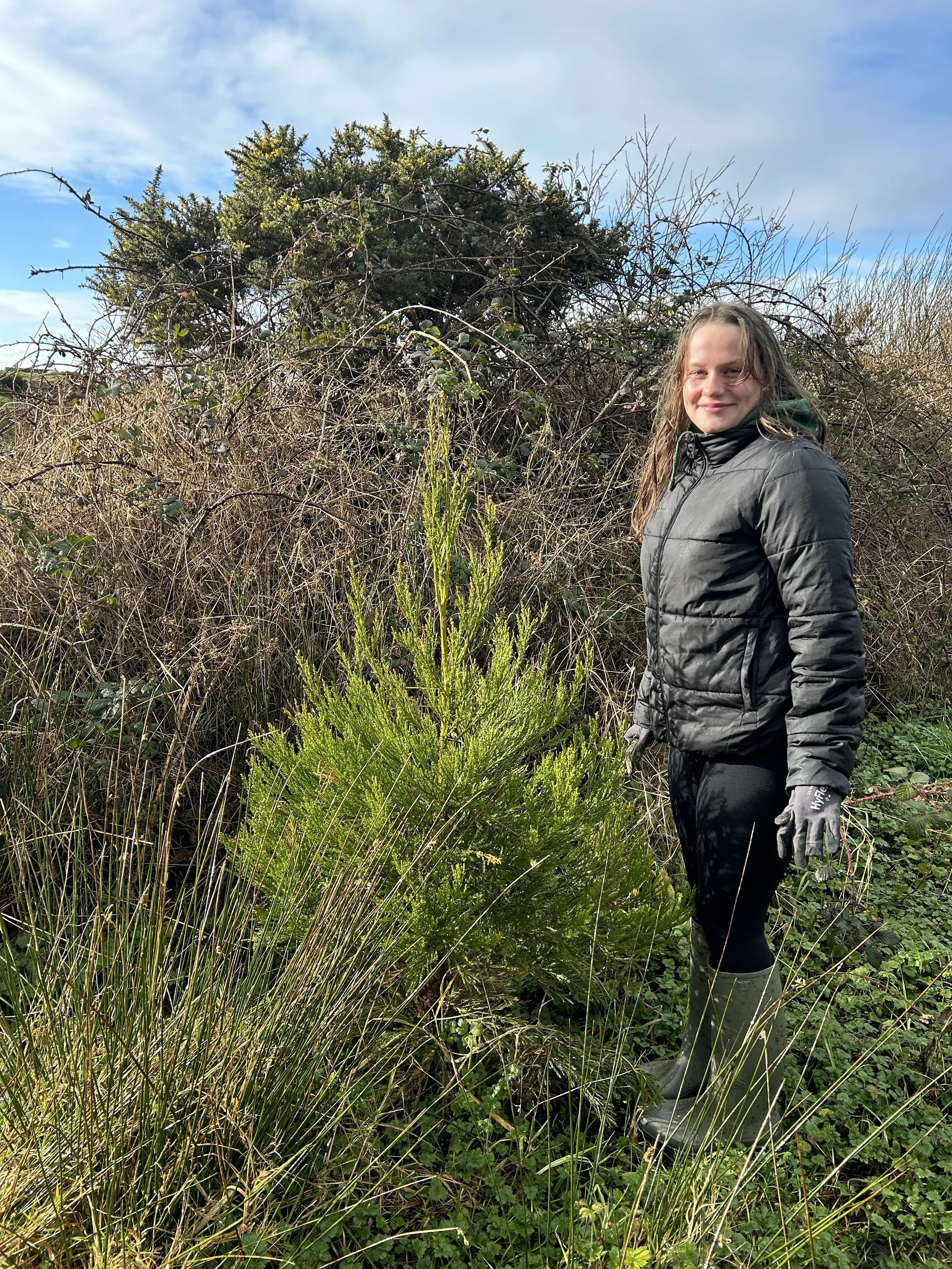Biodiversity loss - should you care
New Approaches to Address Biodiversity Loss and the Climate Crisis
Introduction
The climate crisis and biodiversity loss are two urgent and interconnected challenges that require immediate action. A recent study published in the journal Science highlights the need for a comprehensive and collaborative approach to tackle these issues effectively[^3]. This article explores innovative solutions and strategies to address biodiversity loss and mitigate the impacts of the climate crisis. By understanding the importance of biodiversity and its relationship with climate change, we can work towards a more sustainable and resilient future for our planet.
The Importance of Biodiversity
Biodiversity refers to the variety of life on Earth, including plants, animals, microorganisms, and ecosystems. It plays a crucial role in maintaining the health and functioning of our planet. Biodiversity provides numerous ecological, economic, and social benefits, including:
Ecosystem stability and resilience
Nutrient cycling and soil fertility
Climate regulation
Pollination of crops and natural vegetation
Provision of food, medicine, and raw materials
Cultural and recreational value
However, biodiversity loss is occurring at an alarming rate. Human activities such as habitat destruction, pollution, overexploitation, and climate change have led to the extinction of numerous species and the degradation of ecosystems. It is essential to address this loss to ensure the long-term sustainability of our planet.
The Climate Crisis and Biodiversity Loss: A Dual Challenge
The climate crisis and biodiversity loss are closely intertwined. Climate change exacerbates biodiversity loss, and the loss of biodiversity, in turn, amplifies the impacts of climate change. The study mentioned earlier emphasizes that these two crises should not be seen as separate issues but as interdependent challenges[^3]. Here are some key connections between the climate crisis and biodiversity loss:
Habitat Loss and Fragmentation
Habitat loss and fragmentation, primarily caused by human activities such as deforestation and urbanization, are major drivers of biodiversity loss. As natural habitats are destroyed or fragmented, many species lose their homes and face reduced access to resources. This leads to population declines and, in some cases, extinction. Additionally, the loss of habitats reduces the capacity of ecosystems to sequester carbon, contributing to the climate crisis.
Climate Change as a Driver of Biodiversity Loss
Climate change poses significant threats to biodiversity. Rising temperatures, altered precipitation patterns, and extreme weather events disrupt ecosystems and force species to adapt, migrate, or face extinction. Some species may not be able to adapt quickly enough or find suitable habitats, leading to population declines and loss of biodiversity. For example, corals, which are sessile organisms, face the risk of disappearing entirely due to heat stress and ocean acidification caused by climate change.
Impacts on Ecosystem Services
Biodiversity loss affects the provision of essential ecosystem services that support human well-being. These services include the purification of air and water, regulation of climate, pollination of crops, and the provision of food and raw materials. As biodiversity declines, the capacity of ecosystems to provide these services diminishes, impacting human livelihoods, food security, and overall quality of life.
Solutions to Address Biodiversity Loss
Addressing biodiversity loss requires a comprehensive and multi-faceted approach. Here are some innovative solutions and strategies that can help conserve and restore biodiversity:
Protected Areas and Habitat Conservation
Establishing and effectively managing protected areas is crucial for conserving biodiversity. Protected areas help preserve critical habitats, safeguard endangered species, and maintain ecosystem functions. Additionally, habitat conservation efforts should extend beyond protected areas to include sustainable land-use practices, habitat restoration, and the reduction of habitat fragmentation.
Sustainable Land and Resource Management
Promoting sustainable land and resource management practices is essential for mitigating biodiversity loss. This includes sustainable forestry practices, responsible agricultural practices, and sustainable fishing methods. By adopting these practices, we can minimize negative impacts on ecosystems and ensure the long-term viability of natural resources.
Reforestation and Habitat Restoration
Reforestation and habitat restoration initiatives play a vital role in restoring degraded ecosystems and enhancing biodiversity. Planting trees not only helps sequester carbon dioxide but also provides habitat for numerous species. Habitat restoration projects should focus on enhancing connectivity between fragmented habitats, creating wildlife corridors, and restoring degraded ecosystems to their natural state.
Supporting Indigenous Communities and Local Engagement
Indigenous peoples and local communities have a deep connection with the land and possess valuable traditional knowledge about biodiversity conservation. Supporting and empowering these communities in their efforts to protect and manage natural resources is crucial for preserving biodiversity. Collaborative partnerships and co-management approaches can help ensure the inclusion of local perspectives and promote sustainable practices.
Education and Awareness
Raising awareness about the importance of biodiversity and the need for its conservation is essential for fostering a culture of environmental stewardship. Education programs, public campaigns, and community engagement initiatives can help inspire individuals to take action and make informed choices that promote biodiversity conservation.
Strategies to Mitigate the Climate Crisis
While addressing biodiversity loss, it is equally important to tackle the climate crisis. Here are some strategies to mitigate the impacts of climate change:
Reduction of Greenhouse Gas Emissions
Reducing greenhouse gas emissions is crucial for mitigating climate change. This includes transitioning to renewable energy sources, improving energy efficiency, and adopting sustainable transportation methods. By reducing our carbon footprint, we can help slow down the rate of global warming and protect biodiversity.
Renewable Energy and Sustainable Infrastructure
Investing in renewable energy technologies and promoting sustainable infrastructure development can help reduce dependence on fossil fuels and minimize the environmental impacts of energy production. Transitioning to a low-carbon economy is essential for mitigating climate change and protecting biodiversity.
Climate Resilience and Adaptation
Developing climate resilience and adaptation strategies is crucial for minimizing the vulnerability of ecosystems and communities to climate change impacts. This includes the development of resilient infrastructure, climate-smart agriculture, and effective water management practices. By building resilience, we can enhance the ability of ecosystems to withstand climate-related stresses and ensure their long-term survival.
Collaboration and Collective Action
Addressing biodiversity loss and the climate crisis requires collective action and collaboration at all levels. Governments, international organizations, NGOs, businesses, and individuals must work together to implement effective conservation and mitigation strategies. Collaboration between different sectors and the active involvement of local communities are essential for achieving long-term success.
And Finally
The climate crisis and biodiversity loss are urgent global challenges that require immediate action. By understanding the connections between these two issues and implementing innovative solutions, we can work towards a more sustainable and resilient future. Protecting and restoring biodiversity, reducing greenhouse gas emissions, and building climate resilience are key strategies to address these interconnected crises. Together, we can make a positive impact and ensure the well-being of future generations and the planet we call home.
"The greatest threat to our planet is the belief that someone else will save it." - Robert Swan




